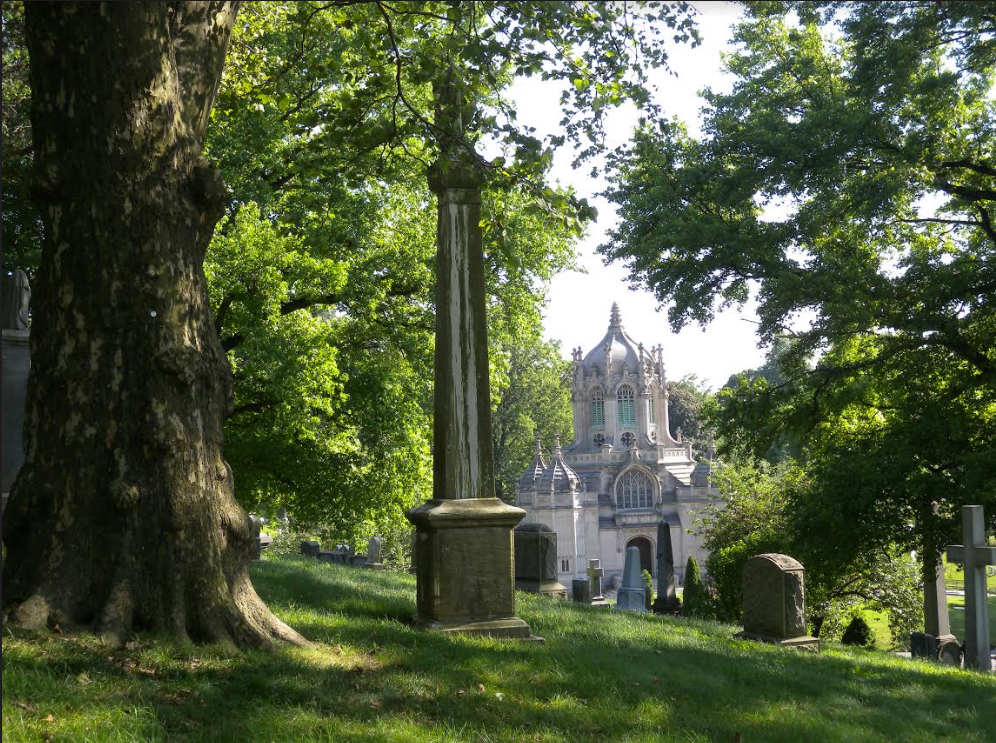Come see Green-Wood Cemetery’s cherry blossoms
Eye on Real Estate: Fine fleurs brighten Brooklyn graveyard’s vistas

Green-Wood Cemetery. Eagle file photo by Lore Croghan
Tempus fugit. Flowering trees’ moments of glory are fleeting. See them ASAP at Green-Wood Cemetery.
Cherry blossoms might be the prettiest flowers in the universe — and Brooklyn Botanic Garden isn’t the only place you’ll find them in abundance this time of year.
The hilly precincts of Green-Wood Cemetery are populated with the beloved blooming trees. At every turn in the 478-acre Greenwood Heights graveyard, masses of pink petals brighten the vistas of tombstones and mausoleums.
